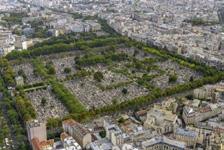
4 minute read
2.0 Design theory
The concept of emancipation was inspired by the project on Copenhagen, titled Superkilen. The expansive public space attempts to ’emancipate’ ideas of migration by collaborating with the surrounding ethnically and socially mixed communities to insert features from their home countries. What is achieved is an arresting array of images, signs, and recollections that challenge the user’s perception of space, scale, and place (Superkilen, 2012).
Moreover, the idea of emancipation in Superkilen is also integrated with the concept of the historic gardens in Florence or Versaille that were loaded with allegorical depictions and the historic English landscape garden showcases replications of Greek ruins. The team proposed to employ it in the contemporary, urban version of a universal garden. The eclectic architecture concept could have simply symbolized the cultural elements existing in Malaysia contributed by each ethnic group.
Advertisement
What may be interesting to the project that sited in Kuala Lumpur, Malaysia is the idea of shaping architecture as an open-minded and inclusive object to society. Instead of applying the concept of integration or assimilation, they promote the idea of emancipation to engage a community of co-existence (Rein-Cano, 2016). Perhaps this is actually what Malaysian need, not to force the people to modify self-identity to adapt to the majority but instead of accepting the differences which each ethnic group has and embracing the uniqueness as part of Malaysian.
In this chapter, the way to approach emancipation is explored with the case studies method. Projects that are famous and popular bring crowds or have the purposes of connecting or keeping people from different backgrounds in one space. The projects are grouped into two categories namely international and local. The international one is to explore different types of architecture typology which share the design feature similar to the idea of emancipation. Whereas the local projects are to explore spatial design ideas or concepts for public space design as well as program design that responds to the climate as well as community favoritism in Malaysia. Having to say, emancipation is a very new and abrupt concept to Malaysia or even Asia. Therefore, this part is done to gather ideas from successful western examplary projects and apply them to the urban form in Kuala Lumpur.
As mentioned on the previous page, the placemaking projects that are outside of Asia belong to different architectural typologies. There are House of One from Berlin, Pere Lachaise from Paris, and Luchtsingel Bridge from Rotterdam. If they are to be categorized, they will be considered as building, park, and a footbridge typology respectively. The variety of typology of the projects was designed differently in responding to the urban context in terms of connectivity and accessibility. This will be partly studied by learning their approach in reacting to the urban fabric such as entrance circulation design. In addition, some of these projects do include program intervention to attract and engage the community to the urban context.
On the other hand, projects that are chosen locally included a pedestrian mall, a vehicular street that connects to four different religions of places of worship, and a popular public plaza-park. This section of the study will cover the program design which attracts the crowd as well as architecture design in the tropical outdoor environment in Malaysia. Also, an idea of requirements to the site location that would beneficial to such infrastructure of cemetery setting.
EUROPEAN PLACE-MAKING PROJECT
LOCAL - PLACE MAKING PROJECT
PARK / BUILDING / BRIDGE
URBAN RESPONSIVE
INTERVENTION
PROGRAMME THAT DESIGN FOR MALAYSIAN
INTEREST IN TROPICAL ARCHITECTURE DESIGN SEMI OUTDOOR COMMUTE STRUCTURE
CONTEXT REQUIREMENT
Blue, Green, Red 8/9 Figure 2.0.1: A perspective rendering of House of One, Berlin that is still under construction. Source: K.M.D.A. (2021, May). Rendering Kuehn Malvezzi House of One / Petriplatz [Illustration]. House of One
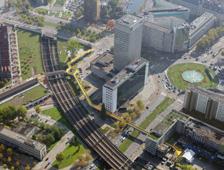
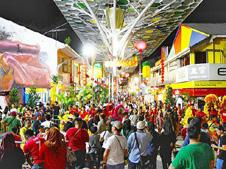
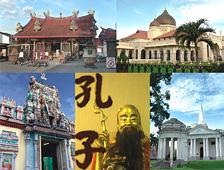
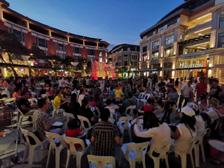
Figure 2.0.2: Aerial view of Pere Lachaise Cemetery taken from Montparnasse. Source: Aerial view of Pere Lachaise Cemetery taken from Montparnasse. (2018, October 30). [Photographi]. Mieux Vivre.
Figure 2.0.3: Aerial view of Luchtsingel Footbridge. Source: Ossip, D. (n.d.). LUCHTSINGEL SCHIEBLOCK [Photograph]. Ossip.
Figure 2.0.4: Aerial view of happening Indian Street in Kuching. Source: Noni, M. A. (2019, February 22). The crowd that has gathered at India Street Pedestrian Mall during the Chap Goh Mei 2019 celebration. [Photograph]. New Sarawak Tribune
Figure 2.0.5: ‘Street of Harmony’. Here, houses of worship representing various world religions are lined up along an axis. Source: Goh, H. M. (n.d.). World Religion Walk, Penang [Photograph]. Global Ethnic Penang.
Figure 2.0.6: Perspective photograph of the happening Plaza Arcadia, Desa Parkcity. Source: A fun filled evening at World Children’s Day in Plaza Arkadia, Desa ParkCity. (2019, November 25). [Photograph]. Plaza Arcadia, Desa Parkcity Specialist Facebook.




